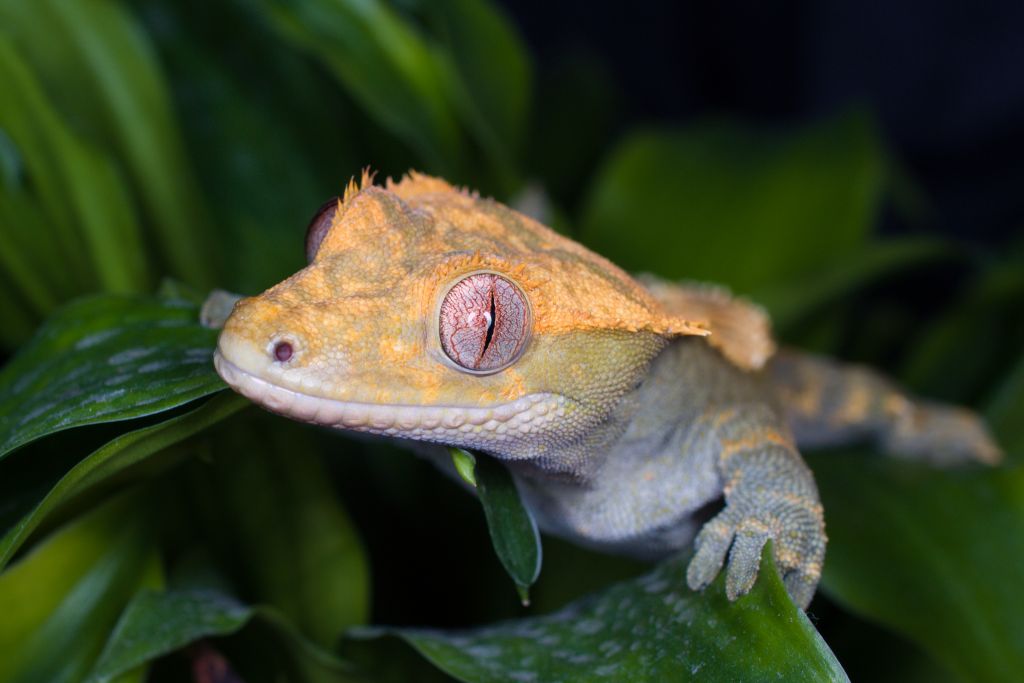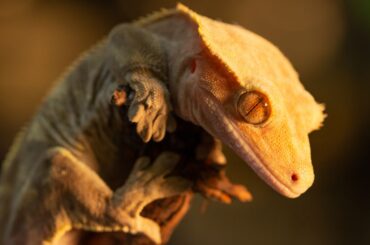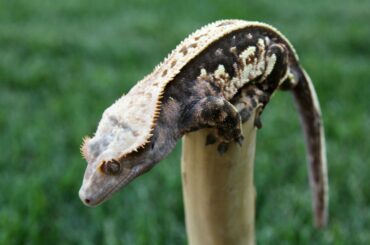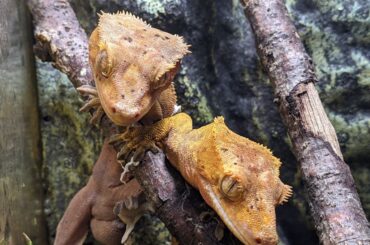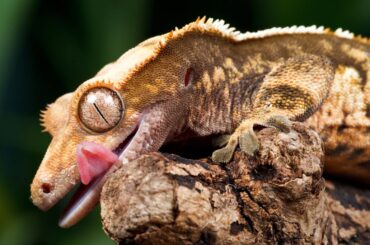What makes crested geckos such a popular choice among reptile enthusiasts? How can you create a habitat that not only meets their needs but also enhances their quality of life? Are live plants genuinely essential for the well-being of these unique creatures? Let’s uncover the answers together and unlock the world of crested geckos.
New Caledonian crested geckos, known as “eyelash geckos” because their eyelash-like crests, are interesting. Their spectacular looks and calm attitude make these little reptiles popular pets.
For reptile enthusiasts and gecko beginners alike, crested geckos are easy to care for and flourish in well-designed habitats. Their pleasant personality and variety of colors and patterns make them a fun addition to any reptile collection.
Creating a natural environment for your crested gecko will keep them happy and healthy. Live gecko plants are essential to this habitat, giving beauty and health benefits to your gecko. Let’s create the perfect crested gecko home together, whether you’re a veteran reptile keeper or just starting.
Understanding Crested Gecko Habitat Requirements
Crested geckos, popular as pets, thrive in specific environmental conditions. They need a temperature between 71 to 78℉ (22 to 26℃) during the day and a slight drop at night. Maintaining humidity at 50 to 60% is crucial for their well-being. Proper lighting is also essential, with a 12-hour light-dark cycle.
Live plants play a vital role in a crested gecko’s habitat. They provide hiding spots, climbing opportunities, and help maintain humidity levels. Plus, live plants add a natural touch to the enclosure. Having live plants is not just for aesthetics; it’s essential for their comfort and health.
Benefits of Live Plants for Crested Geckos
Crested geckos flourish in natural surroundings. One fantastic way to achieve this is by adding live plants to their terrariums. These leafy companions don’t just look pretty; they bring benefits to your crested gecko’s home. Here are several reasons to use live plants:
Aesthetics
Imagine your crested gecko’s enclosure transformed into a lush, green oasis. Live plants add a touch of natural beauty that enhances the visual appeal of the habitat. It creates a mini jungle, making it a captivating sight to behold. For any young naturalist, it’s like having a slice of the rainforest in their room.
Humidity Regulation
Maintaining the proper humidity level in a crested gecko’s tank is crucial for their well-being. Live plants play a vital role in keeping the humidity in check. They transpire moisture to keep your pet’s enclosure warm and healthy.
Enrichment
Crested geckos are curious creatures, and they love to explore. Live plants provide them with a dynamic environment to climb, hide, and interact with. This natural setting improves their physical and emotional health, making your time with your pet more enjoyable.
Oxygen Production
Live plants are like little oxygen factories in your gecko’s habitat. Your pet will constantly breathe fresh air because it releases oxygen during photosynthesis. This contributes to their overall health and vitality.
Natural Food Source
Some live plants, like edible greens, can be a supplementary food source for your crested gecko. They can nibble on the leaves, providing them with essential nutrients. Just ensure the plants are safe for consumption and that your gecko is interested in them.
Considerations for Choosing Crested Gecko Safe Plants
Crested geckos are delightful pets, and choosing safe plants for their habitat is crucial for their well-being. Here’s how you can make the right plant choices for your gecko:
- Non-Toxic Plants: Start by choosing safe plants for your crested geckos to munch on. Some great options include pothos, spider plants, and orchids. Avoid toxic plants, like aloe vera and philodendron, as they can harm your pets.
- Appropriate Size: Opt for plants that fit well within your gecko’s enclosure. Too many large plants can make it crowded, while too few can make it look empty. Balance is key to keeping the habitat enjoyable.
- Low Maintenance: Consider plants that are easy to care for. You want your geckos to have a lush environment without causing you too much stress. Plants like snake plants and bromeliads require minimal care.
24 Best Plants for Crested Geckos
Live plants not only make their habitat more attractive but also provide hiding spots and a natural source of humidity. To find the best crested gecko plants for your pet’s happiness and health, this section offers 24 of the best.
Snake Plant (Sansevieria trifasciata)
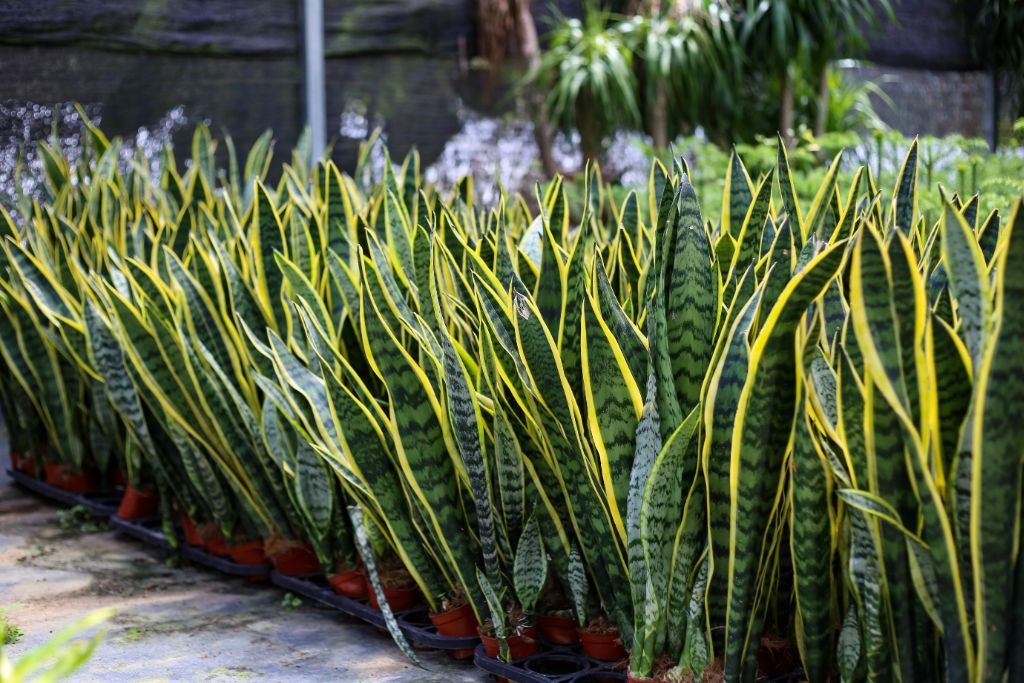
The snake plant is characterized by long, upright leaves that resemble snake skins, which is how it got its common name.
It prefers bright, indirect sunlight, so place it near a window where it can get some light but not direct sun. Water it moderately every few weeks, allowing the soil to dry out between waterings.
Make sure to put the snake plant in a pot with well-draining soil. You can place it in a corner of the tank to provide a little hideaway for your gecko or position it near a branch for climbing.
Pothos (Epipremnum aureum)
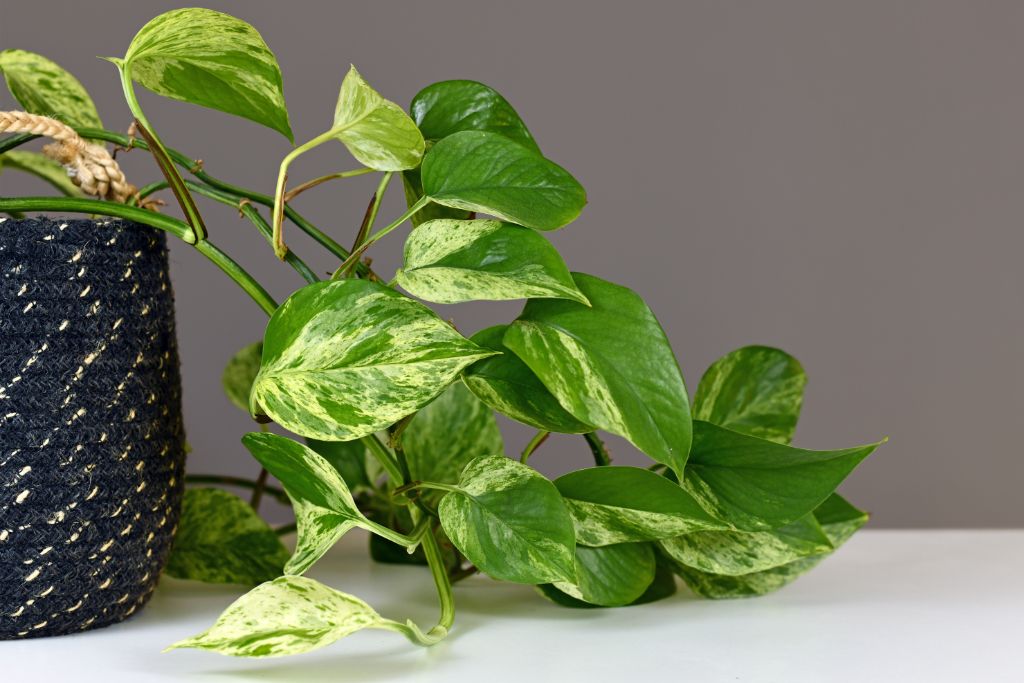
Pothos is often called the “Devil’s Ivy” or “Golden Pothos” due to its heart-shaped leaves in various shades of green and even variegated patterns.
These resilient plants thrive in indirect sunlight, so placing them near a window with filtered light is perfect. Allow the soil to dry out between waterings, and make sure the pot has proper drainage. Keep the temperature between 71 to 80℉ (22 to 27°C) for optimal growth.
Position the pothos in a way that provides some climbing opportunities. You can let it drape down or attach it to branches for a natural, jungle-like environment.
Creeping Wire Vine (Muehlenbeckia axillaris)
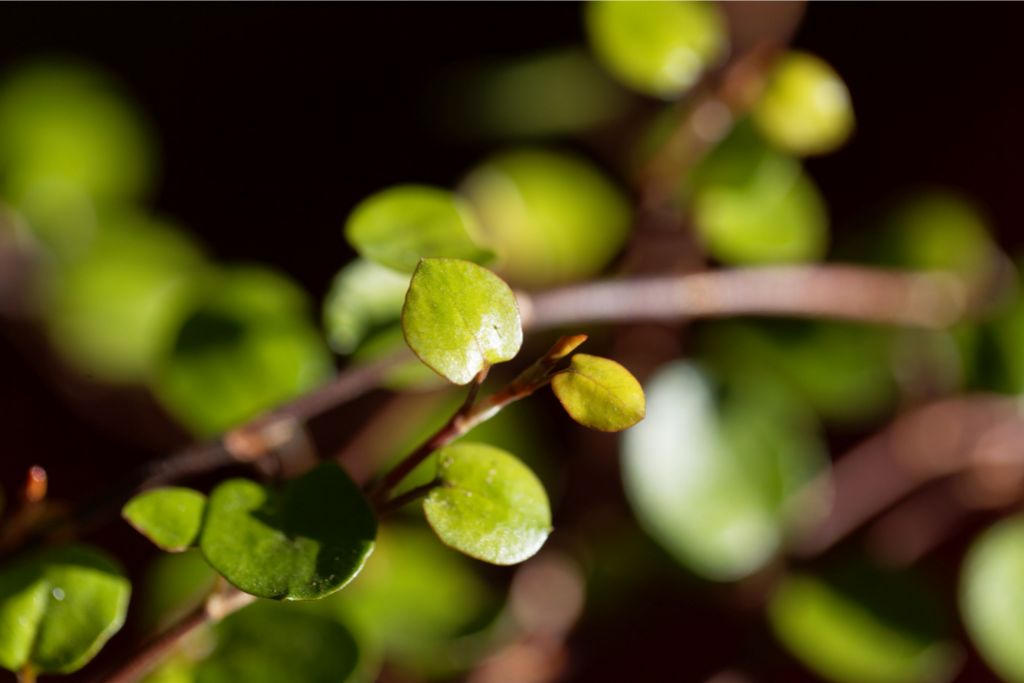
Creeping wire vine is a charming creeper with tiny, glossy, dark green leaves that create a lovely cascade of greenery.
It thrives in bright, indirect light, so placing it near a window with filtered sunlight is excellent. Ensure that the soil is moderately moist. Maintain a temperature range of 69 to 80℉ (21 to 27°C).
In your crested gecko’s enclosure, position the creeping wire vine in a way that allows it to drape or climb. Your gecko will enjoy exploring the vines, and it can provide some hiding spots.
Bird’s Nest Fern (Asplenium nidus)
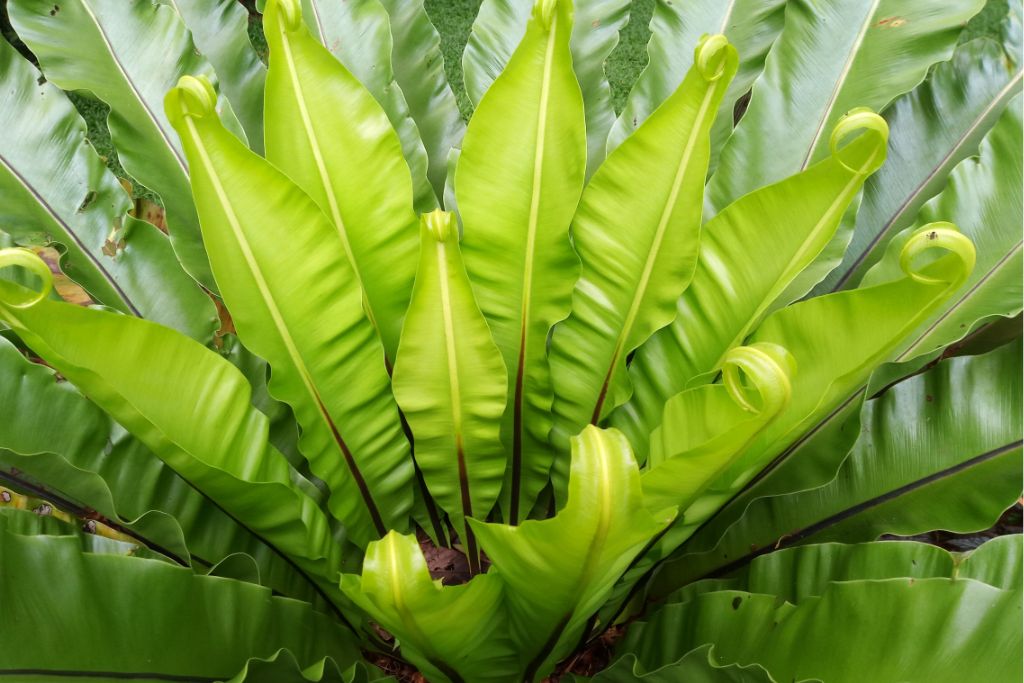
The bird’s nest fern has broad, wavy leaves that resemble a bird’s nest, giving it its charming name. It thrives in low to medium light conditions. It’s important to keep the soil consistently moist but not soggy. Ensure the temperature in the tank stays within the range of 69 to 80℉ (21 to 27°C).
Consider putting the bird’s nest fern in a corner or along the back wall. This plant can grow quite large, so ensure it has enough space to spread its lovely leaves.
Bromeliads (Bromeliaceae)
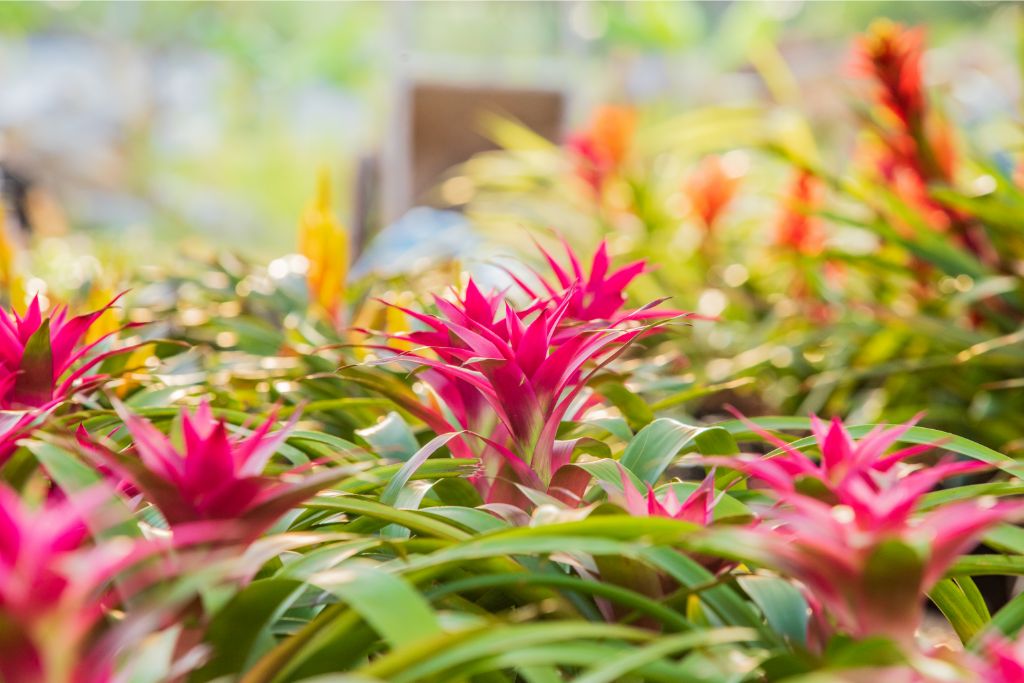
Bromeliads are not only visually appealing but also provide an excellent environment for your gecko. Bright green bromeliad leaves feature a cup-shaped center.
They thrive in moderate to bright indirect light, so placing them near a window with filtered sunlight is ideal. Just fill the central cup with water and ensure it remains clean and fresh. Keep the temperature in the recommended range of 69 to 80℉ (21 to 27°C).
Position bromeliads near the middle or upper levels of the tank. They can be placed alongside other plants to create a stimulating environment for your pet.
Chinese Evergreens (Aglaonema)
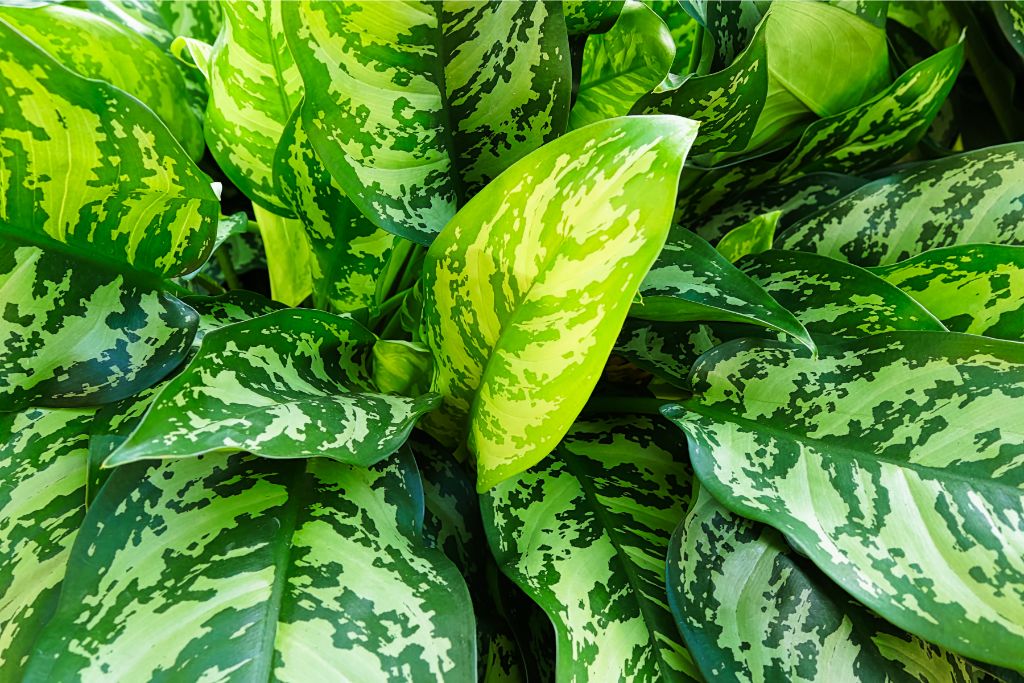
Chinese evergreens have attractive variegated leaves in shades of green and silver, making them visually appealing. They are known for their air-purifying qualities.
These plants thrive in low to moderate light, making them ideal for shaded gecko enclosures. These plants prefer well-draining soil and should be watered moderately. These plants thrive in tropical temperatures between 69 to 84℉ (21 to 29°C).
Place them in enclosure corners or along walls to give your gecko a lush green environment. Just ensure they have enough space to climb and hide if needed.
Lucky Bamboo (Dracaena sanderiana)
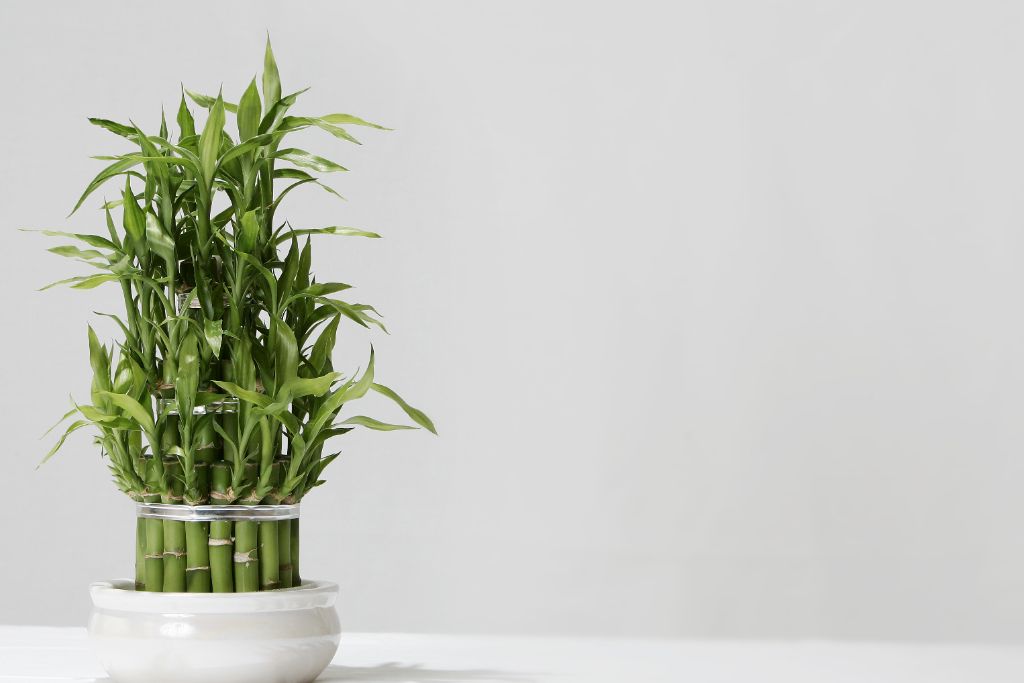
Lucky bamboo, despite its name, isn’t bamboo at all. This striking plant is known for its slender, green stalks that can grow to varying heights, often resembling bamboo.
It prefers bright, indirect light, so placing it near a window with a sheer curtain is ideal. Keep the roots submerged. Make sure to change the water every one to two weeks. Keep it in the same temperature range, around 69 to 80℉ (21 to 27°C).
You can position your lucky bamboo in a small pot or container with a secure base to prevent it from toppling. The container should allow the plant to stand upright, keeping the leaves and stalks out of your gecko’s way.
Concinna Prayer Plant (Calathea leopardina)
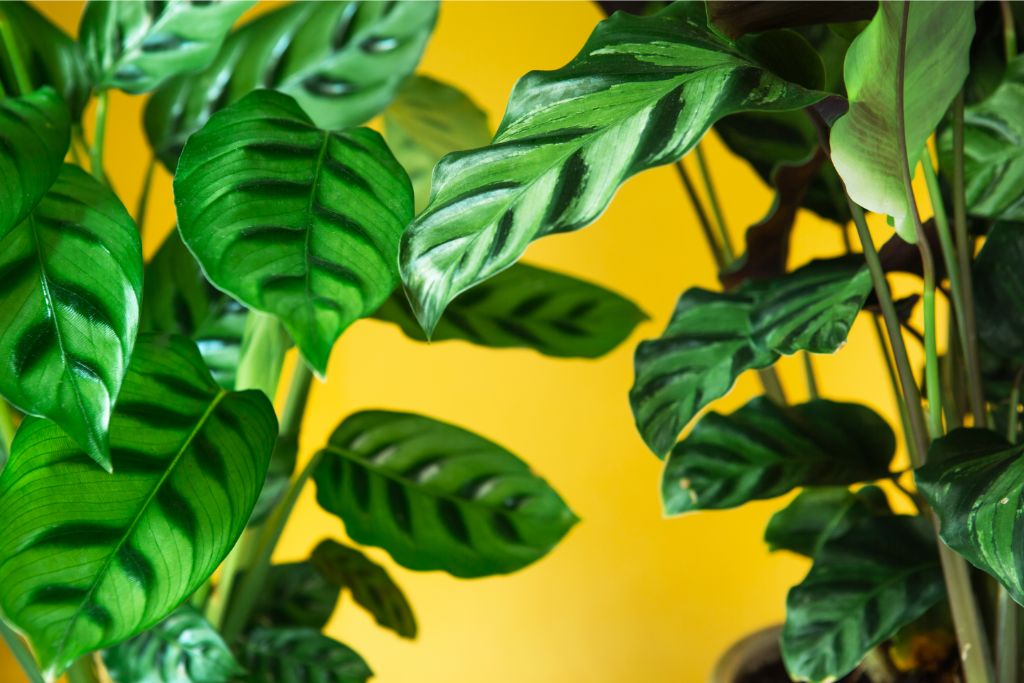
The concinna prayer plant has dark green leaves and red veins. The leaves fold upward at night, resembling hands in prayer, where the “Prayer Plant” comes from.
It thrives in bright, indirect light, which means it shouldn’t be exposed to direct sunlight. Keep the soil consistently moist but not soggy. Maintain a temperature range between 64 to 75℉ (18 to 24°C) for optimal growth.
Place it near branches, vines, or other perches in the tank so your gecko can explore and feel at home. The plant not only adds a touch of natural beauty but also creates hiding spots.
Creeping Fig (Ficus pumila)
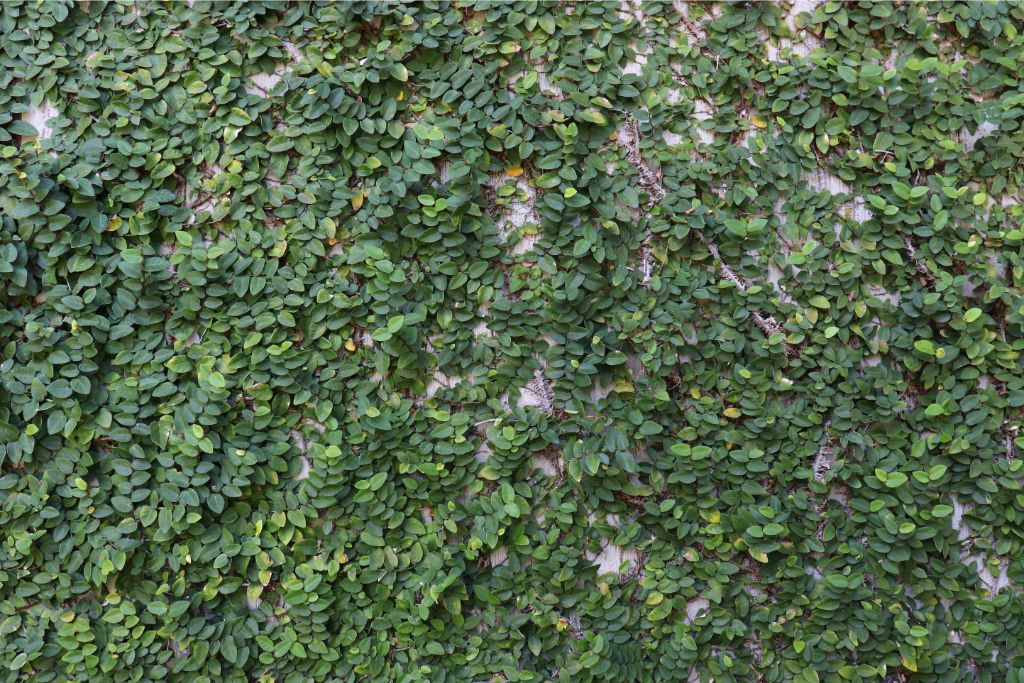
The creeping fig features small, heart-shaped leaves that give a touch of greenery to your gecko’s enclosure.
It grows well in moderate to brilliant indirect light. Place it in your gecko’s tank’s middle or lower regions. Keep the soil slightly moist, and allow the top inch of soil to dry out between waterings. The temperature should be kept between 69 to 75℉ (21 to 24°C).
Pruning the plant occasionally helps maintain its shape. This plant provides a climbing surface for your gecko to explore and hide, so it’s best to position it near the sides or back of the terrarium.
Dwarf Umbrella Tree (Schefflera arboricola)
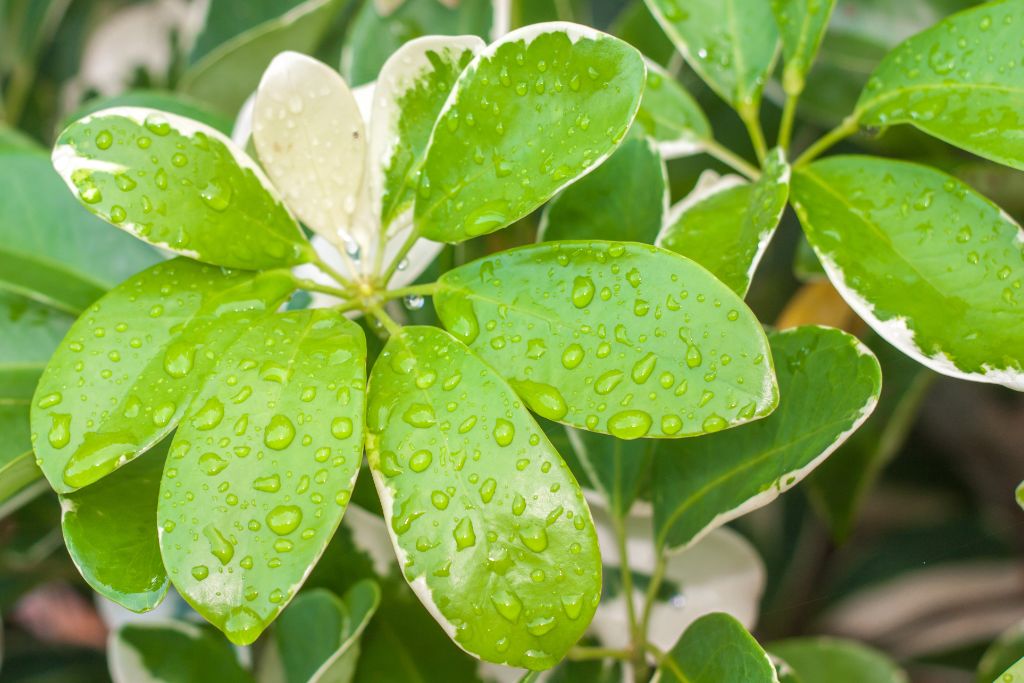
The dwarf umbrella tree is characterized by its small, glossy green leaves that resemble little umbrellas. These leaves are a perfect resting spot for your gecko and can also provide them with some shade.
Make sure it gets bright indirect light. Keep it out of direct sunlight to avoid scorching its delicate leaves. Watering should be done regularly but not excessively. Maintaining a temperature range of 69 to 84℉ (21 to 29°C) in your gecko’s habitat is ideal for the plant’s health.
Place the dwarf umbrella tree in a corner or along the sides of the enclosure. Keep an eye on its size, as it can grow up to 4 to 6 feet tall if not pruned.
Elephant Ears (Alocasia)
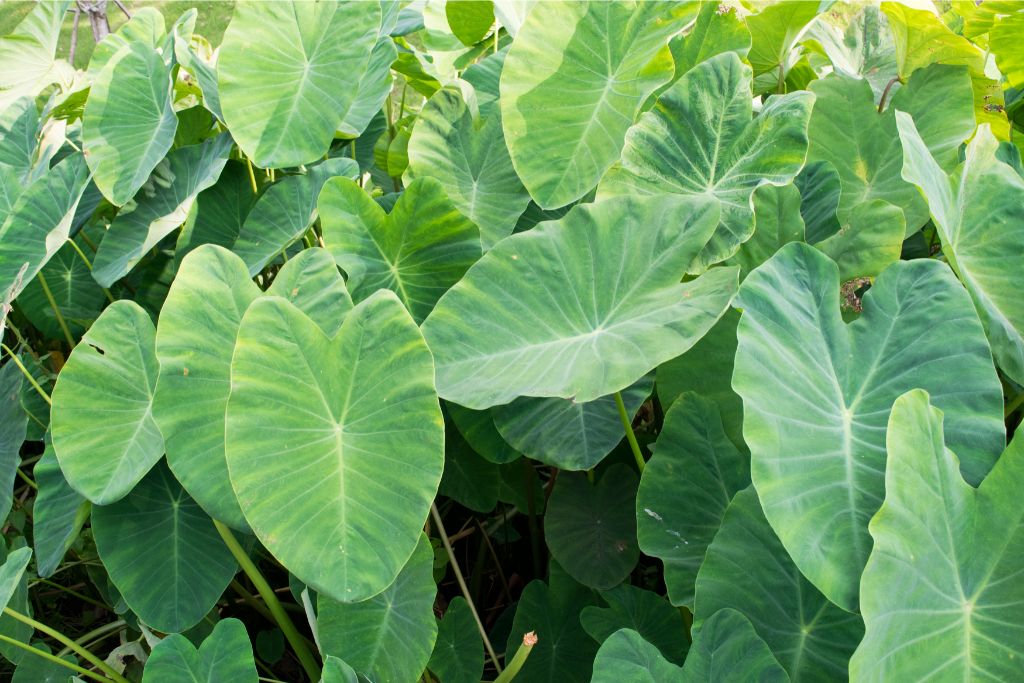
Elephant ears are known for their large, arrow-shaped leaves that resemble, you guessed it, elephant ears. They come in various colors and patterns, adding a touch of elegance to your gecko’s enclosure.
These plants thrive in bright, indirect sunlight. Keep the soil moist, but ensure it’s well-draining to prevent overwatering. Maintain a temperature range between 69 to 80℉ (21 to 27°C).
Place elephant ears in a corner or along the rear wall to allow your crested gecko to climb and explore. Use a sturdy and heavy pot to prevent your gecko from toppling it over.
Goosefoot (Chenopodium)
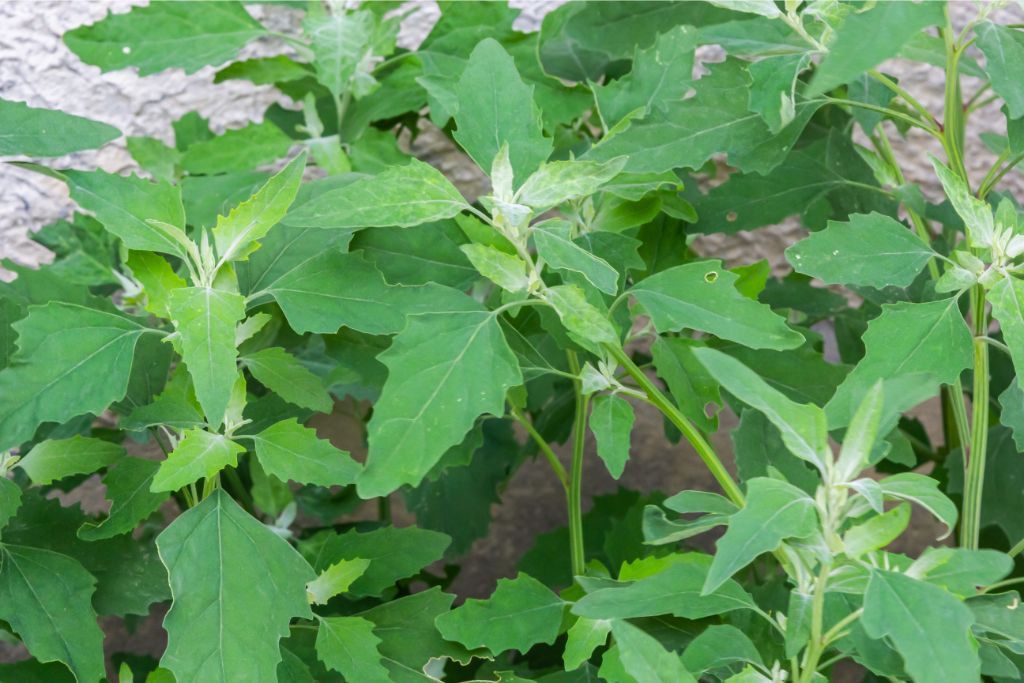
Its vibrant green, arrow-shaped leaves characterize the goosefoot plant. These leaves resemble the shape of a goose’s foot, hence the name.
Indirect or filtered sunlight is ideal for these plants. Avoid placing them in harsh, direct sunlight. Maintain a temperature range of 69 to 80℉ (21 to 27°C). Goosefoot plants also appreciate a humidity level of around 50 to 60%.
Consider positioning goosefoot in a corner or along the back wall, leaving enough space for your crested gecko to explore and climb. Use a sturdy pot to prevent tipping.
Jade Jewel (Crassula ovata)
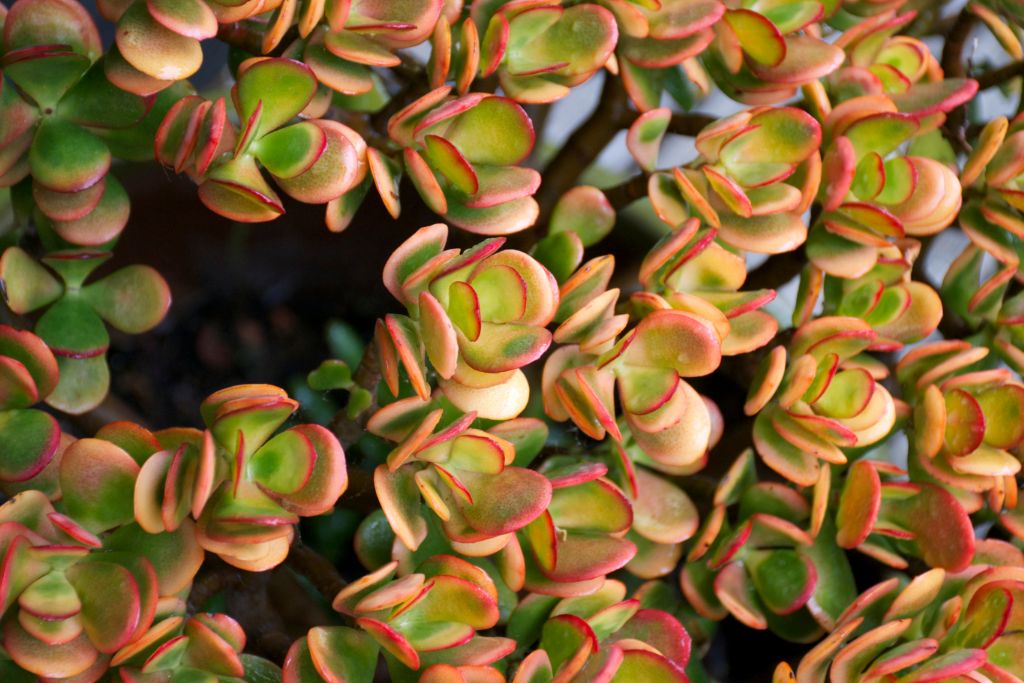
South Africa is home to the jade jewel, a plant prized for its attractive, fleshy leaves. The jade jewel has a vibrant green color and an elegant, tree-like growth habit.
It thrives in bright, indirect light, so place it near the top of the enclosure or use a low-wattage grow light. Allow the soil to dry out between waterings. They prefer warm temperatures between 69 to 80℉ (21 to 27°C).
In your gecko’s tank, you can place the jade jewel in a pot with well-draining soil. This plant doesn’t need much space to grow, so it’s suitable for smaller enclosures.
Lemon Button Fern (Nephrolepis cordifolia)
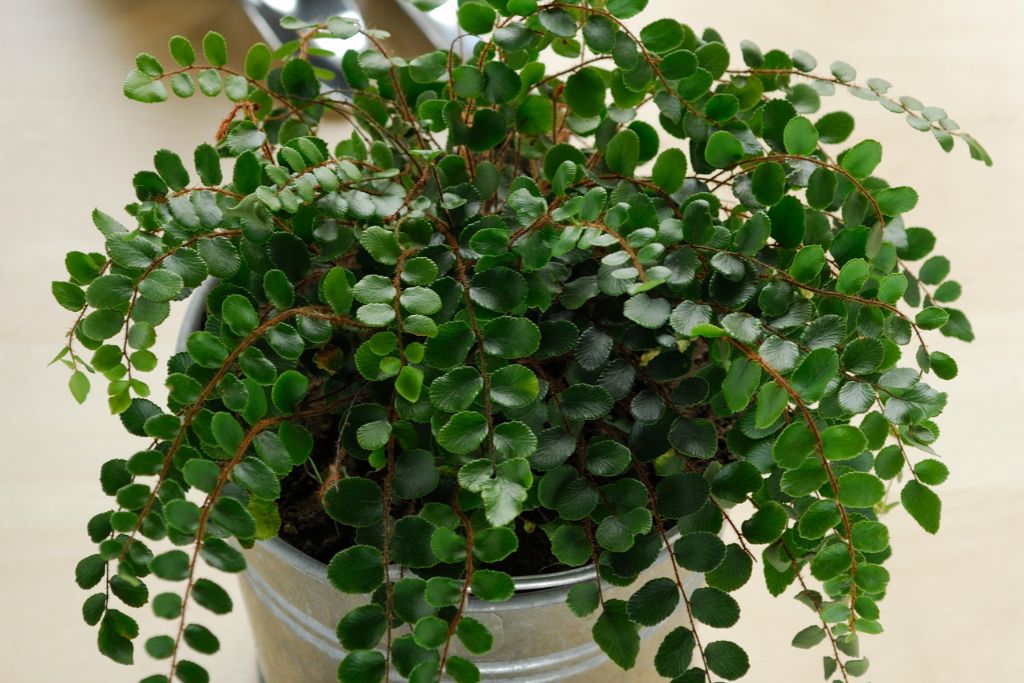
The lemon button fern has small, delicate fronds that resemble buttons. It can create a lush and vibrant environment for your pet.
Indirect or filtered light is best for it. You can place it near the middle or bottom of the enclosure. Watering should be done when the soil feels slightly dry to the touch. Keep the tank within the recommended range of 71 to 78℉ (22 to 26°C).
Place the lemon button fern in a corner or against the background of the enclosure. The fern’s soft fronds will offer a comfortable and inviting environment for your pet.
Peace Lily (Spathiphyllum)
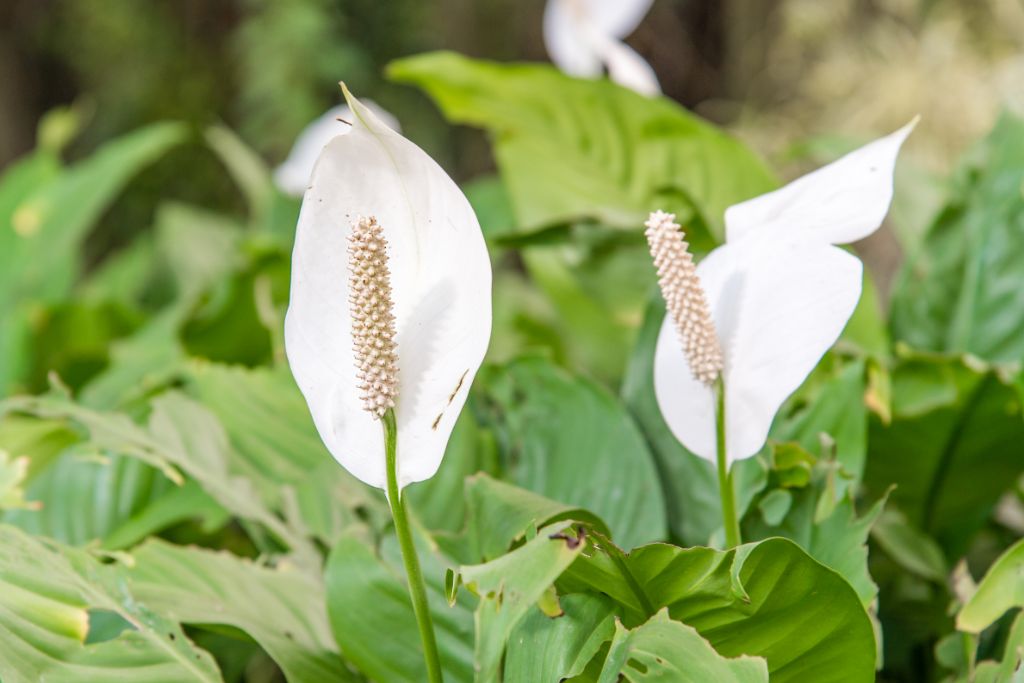
The peace lily has attractive dark green leaves and elegant white flowers. It thrives in moderate to bright indirect light. Keep the soil slightly moist but not soggy. In terms of temperature, the peace lily prefers around 64 to 80℉ (18 to 27°C).
It’s best to place it in a corner or along the back wall. Make sure the pot is securely placed to avoid tipping.
Petra (Codiaeum variegatum)
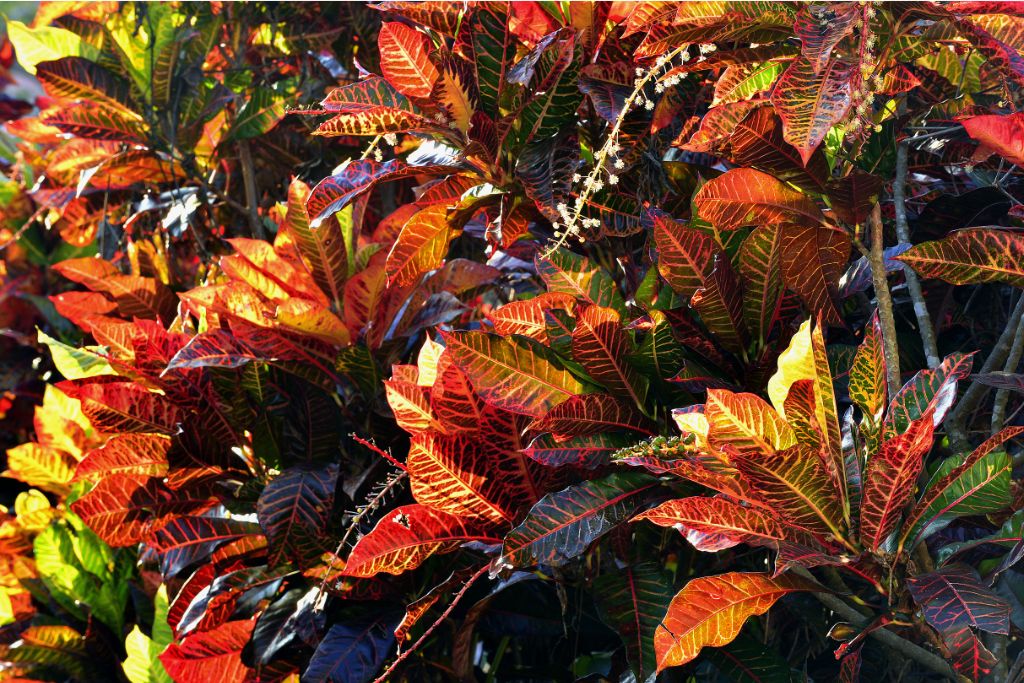
Petra is commonly known as the Hindu rope plant due to its unique twisted vine-like stems. It has thick and waxy leaves.
Put it near a window that receives filtered sunlight as it flourishes in that environment. Water your petra when the top inch of the soil feels dry. Keep the temperature between 69 to 80℉ (21 to 27°C), and maintain moderate humidity.
It can be potted in a corner, allowing its vines to drape and create a beautiful climbing spot for your crested gecko. The twisting vines provide a perfect surface for geckos to explore and climb.
Pillow Moss (Leucobryum glaucum)
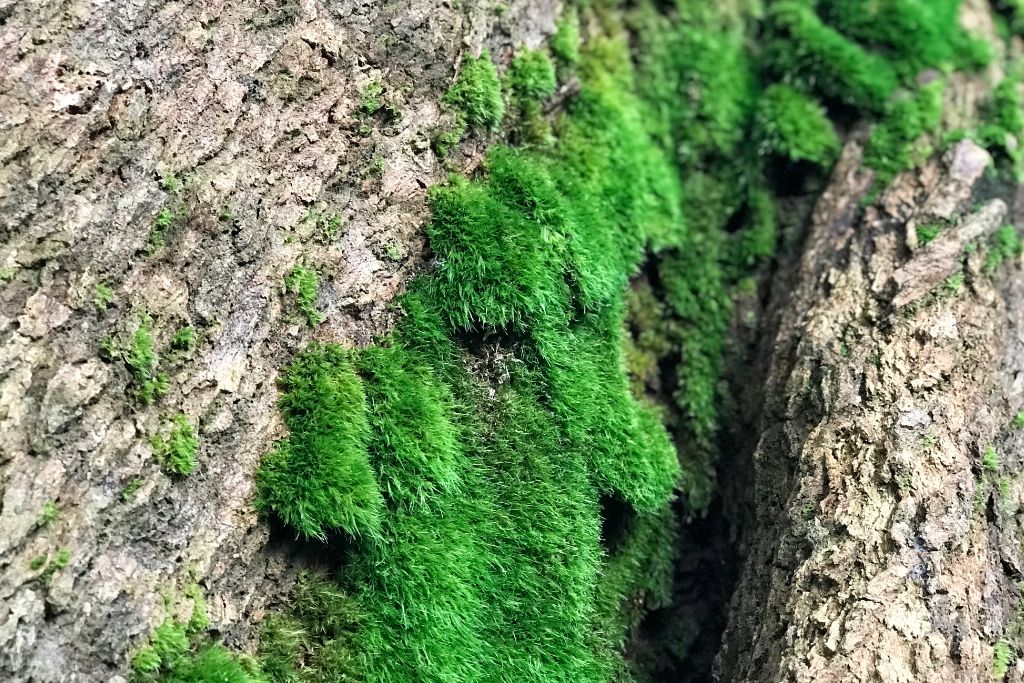
Pillow moss is a unique plant that resembles a soft, fluffy cushion, making it an eye-catching and comfortable choice for your gecko’s habitat.
It thrives on low to medium light, making it ideal for your gecko’s shaded aquarium, and it doesn’t require direct sunlight. Mist it lightly every few days to keep it damp but not soggy. The optimal temperature range for pillow moss is between 69 to 80℉ (21 to 27°C).
These plants work best in the cooler and more humid areas. You can position it around the base of rocks or on the substrate.
Pink Quill (Tillandsia cyanea)
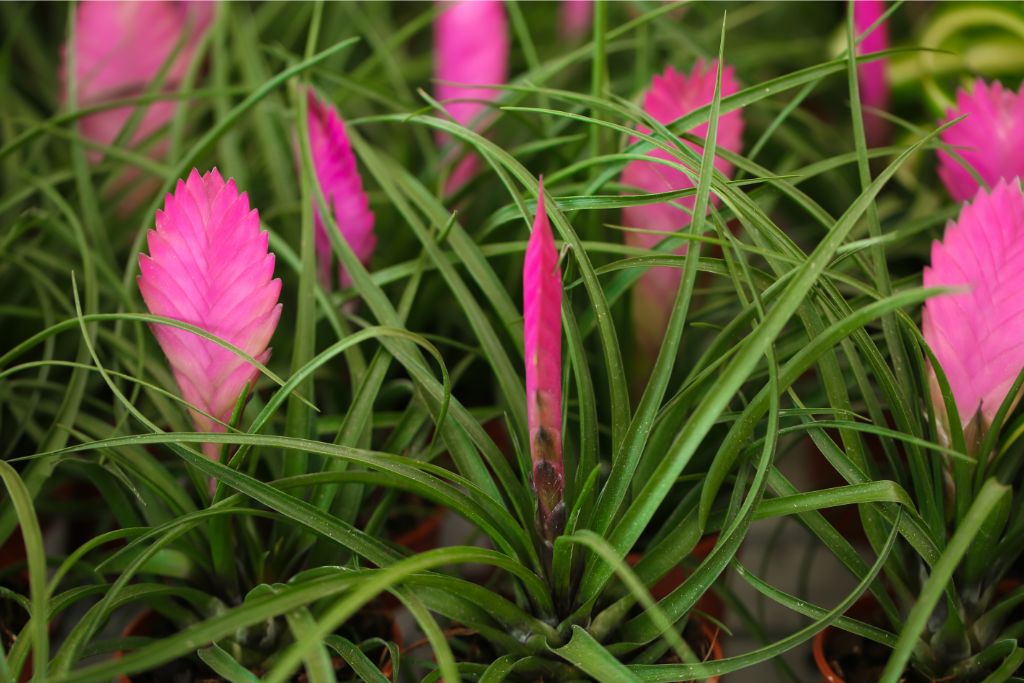
The pink quill has long, slender leaves that are usually bright green, and they often turn pink or violet as they mature. Since it is an air plant, the pink quill doesn’t require any soil to flourish.
It thrives in bright, indirect light, so place it near a window to receive filtered sunlight. Mist the plant with water daily, ensuring the leaves are lightly moistened but not soaked. Use a spray bottle to imitate the plant’s native humidity.
You can attach the pink quill to a branch or a piece of driftwood using a non-toxic adhesive or place it in a decorative container. Ensure it’s not in a spot where your gecko can easily reach it and accidentally damage the plant.
Rabbit’s Foot Fern (Davallia denticulata)
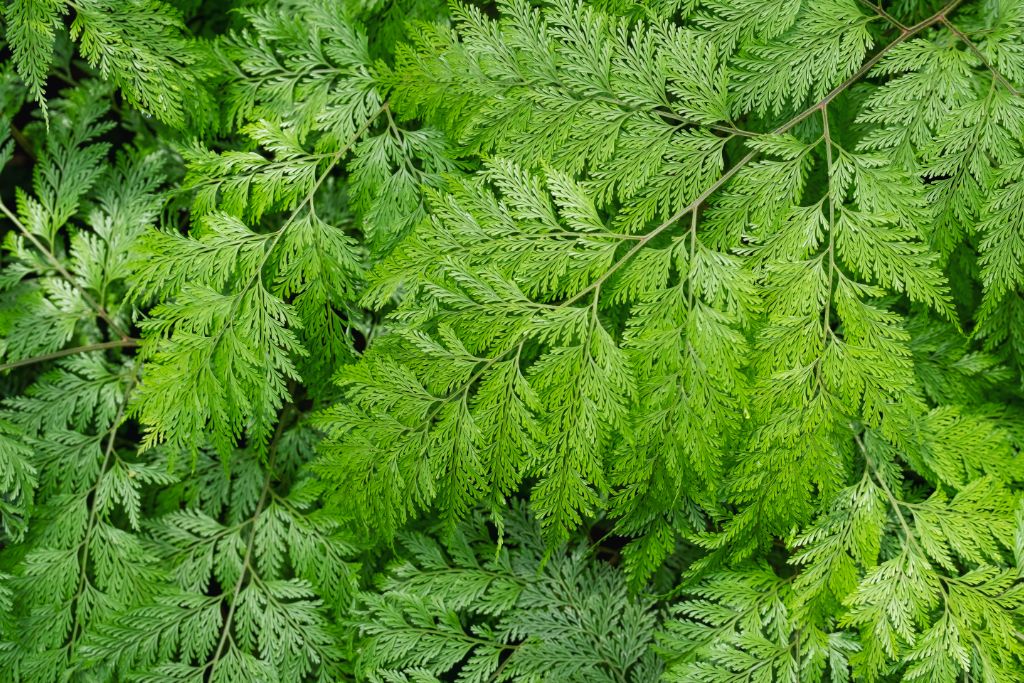
The rabbit’s foot fern gets its name from the furry rhizomes that creep along the soil’s surface, resembling a rabbit’s foot.
It prefers indirect light since direct sunshine can scorch its delicate leaves. Keeping the soil consistently moist is essential. Keep the temperature in the vivarium between 71 to 80℉ (22 to 27°C).
Consider placing the rabbit’s foot fern in the enclosure’s corner to avoid blocking your gecko’s movement or hiding its activities.
Radiator Plant (Peperomia caperata)
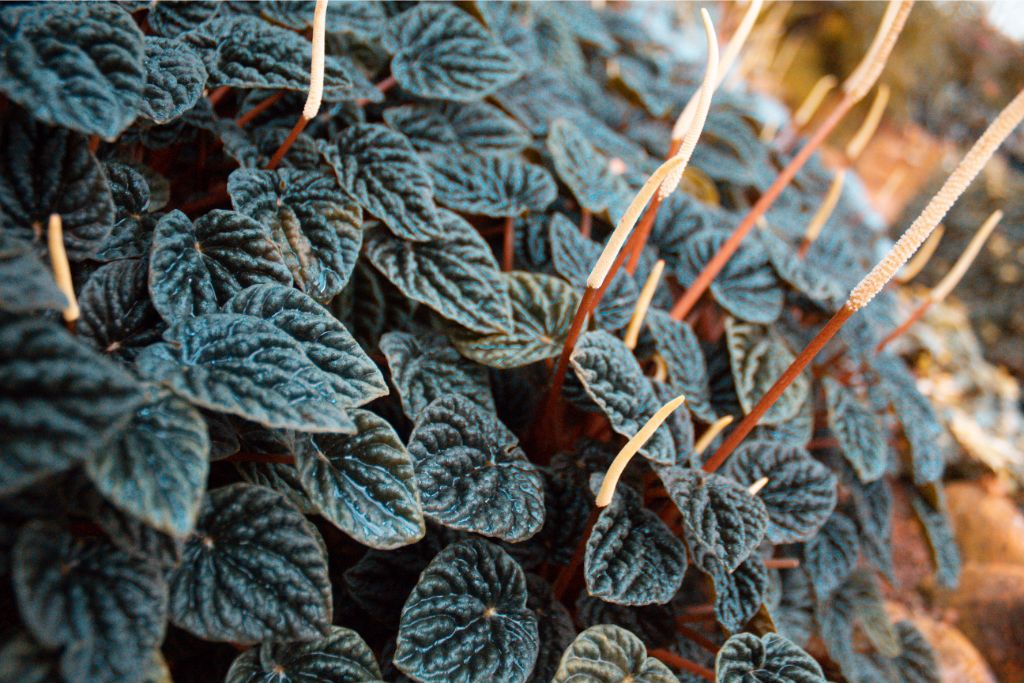
The radiator plant is characterized by its thick, glossy, and elliptical-shaped leaves. It can grow to be about 8 to 12 inches tall.
Place it near a window with a sheer drape or use artificial lighting. It thrives in bright, indirect sunlight. The temperature in the tank should be kept between 71 to 80℉ (22 to 27°C) to ensure the plant thrives.
You can place the radiator plant in a corner or along the side of the terrarium to create some shade and cover for your crested gecko.
Spider Plant (Chlorophytum comosum)
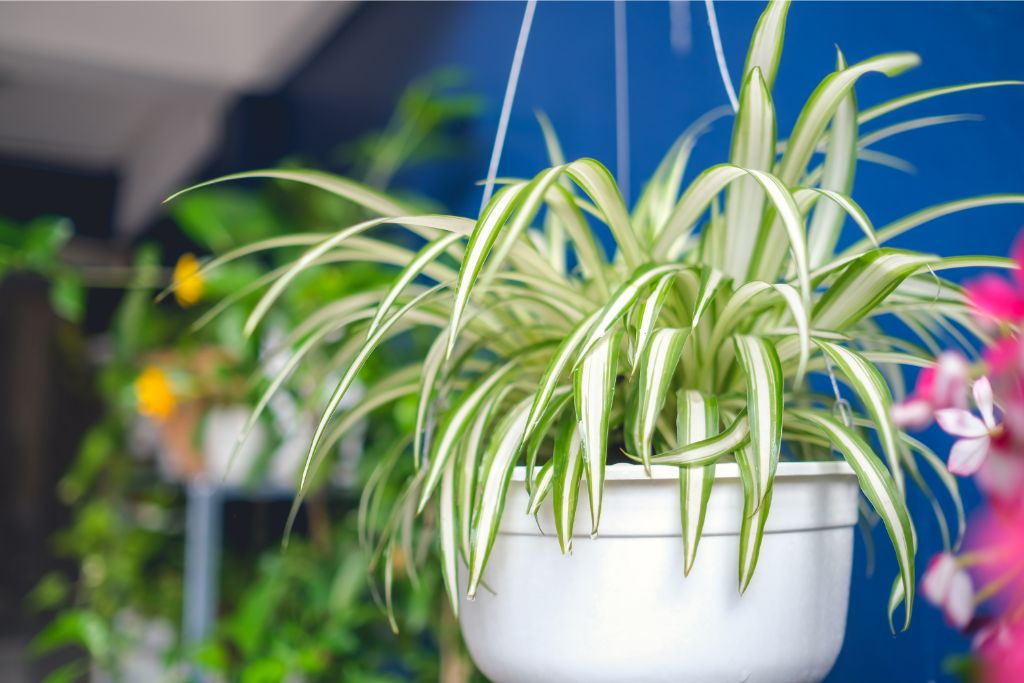
The spider plant is a popular choice for crested gecko enclosures due to its vibrant green leaves and air-purifying qualities. These plants are pretty attractive, with long, arching leaves that are green with white stripes, resembling spider legs.
They’re best near a window filled with soft light. Use a well-draining potting mix to ensure proper drainage. The temperature should ideally range between 69 to 75℉ (21 to 24°C).
Consider placing the spider plant in a corner or near a basking spot to create a natural, jungle-like environment. Just ensure it doesn’t obstruct your gecko’s movement or hide their view.
Weeping Fig (Ficus benjamina)
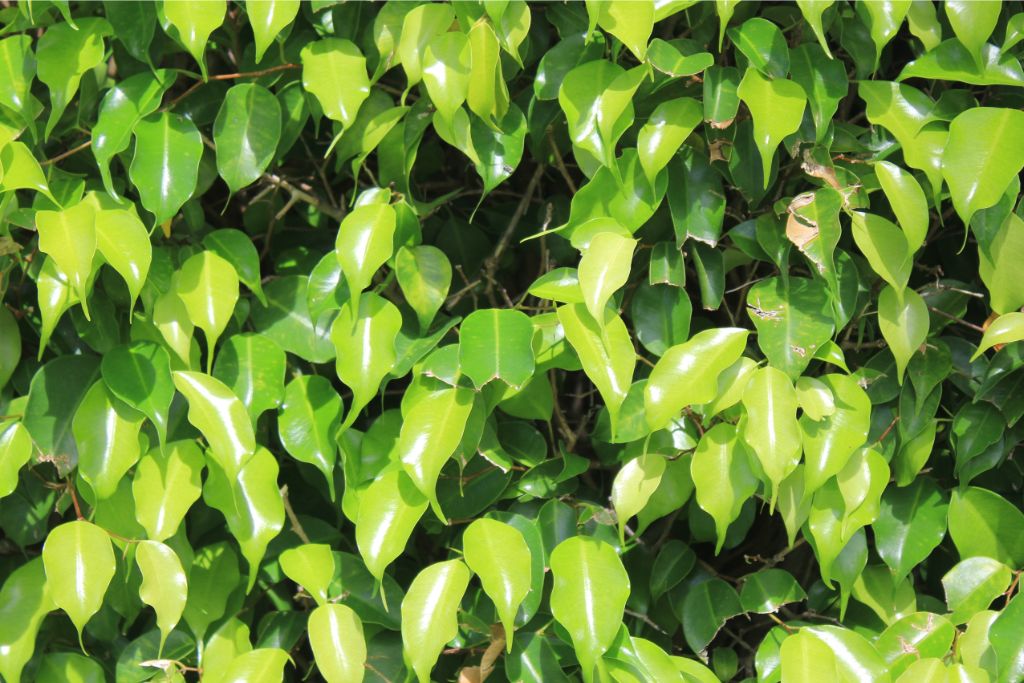
The weeping fig features elegant, cascading leaves that provide a lush and natural look to the enclosure. The leaves are usually dark green and glossy, making them visually appealing.
Ideally, it should be placed near a window that receives moderate to bright, indirect light, such as filtered sunshine. Make sure to keep the soil evenly moist but not soggy. The ideal temperature for this plant is between 64 to 75℉ )18 to 24°C).
You can place it near the back or sides, allowing your gecko some hiding spots while still enjoying the beauty of the plant.
Zebra Plant (Aphelandra squarrosa)
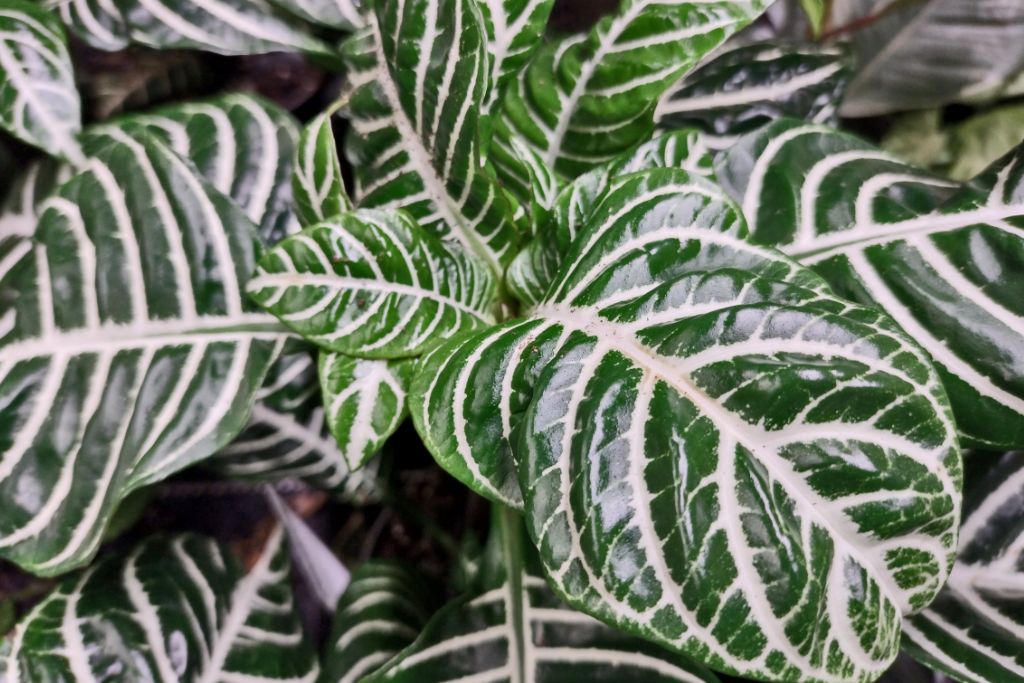
The zebra plant is renowned for its striking, dark green leaves adorned with bold white stripes, resembling the patterns on a zebra.
This plant thrives in bright, indirect light. It’s best to place it where it can enjoy dappled sunlight or under fluorescent lights. Ensure that the temperature in the terrarium remains between 71 to 80℉ (22 to 27°C). It’s essential to keep the soil consistently moist but not soggy.
It should be positioned toward the back or sides of the tank to provide a cozy hiding spot for your crested gecko.
Anthurium (Anthurium andraeanum)
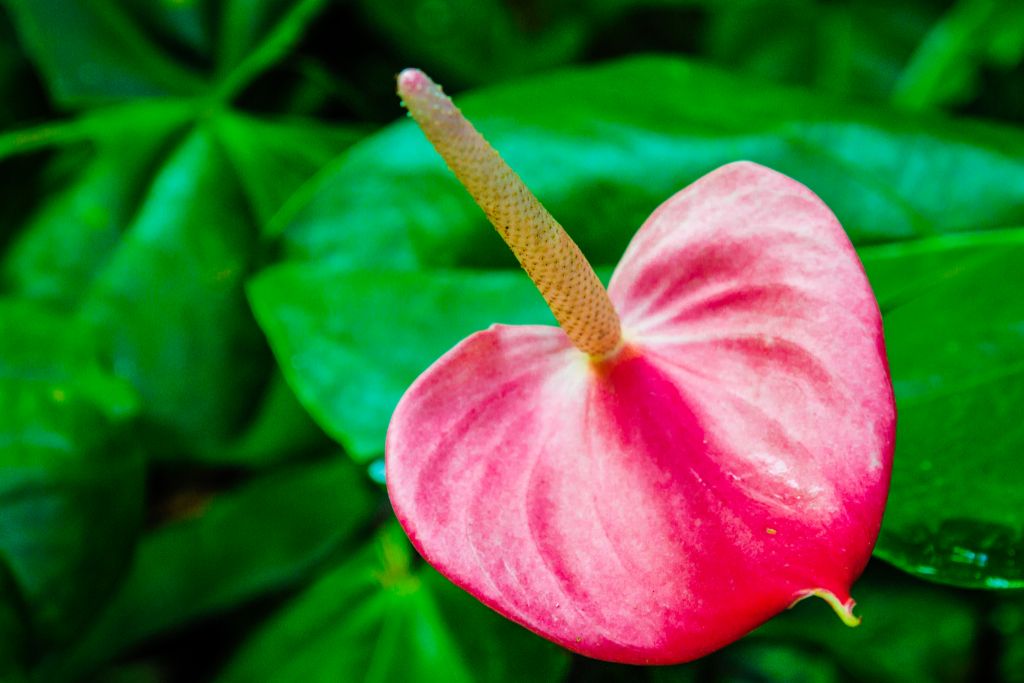
Anthurium is known for its glossy, heart-shaped leaves that come in shades of green and even red.
It prefers bright, indirect sunlight, so placing it near a window with filtered light or using artificial UVB lighting is a good choice. Ensure that the soil is kept consistently moist. The ideal temperature range for anthurium is around 69 to 89℉ (21 to 32°C).
You can place the anthurium in a corner or along the side of the tank. Securely pot it in a non-toxic, well-draining soil mix, and provide some sturdy branches or rocks for your gecko to climb on near the plant.
Conclusion
Live plants act as a natural source of humidity, helping to maintain the ideal moisture levels for your gecko’s skin and overall health. They also provide hiding spots, creating a sense of security and reducing stress for these delicate creatures.
By carefully selecting and arranging live plants in your crested gecko’s habitat, you can create a thriving environment that mirrors their natural surroundings. It ultimately ensures the happiness and well-being of your beloved pet.
FAQs
Can Crested Geckos Eat Plants?
Yes, crested geckos can eat some plants, including fruits, nectar, and commercially prepared diets. They should be offered a balanced diet that includes insects, fruits, and specialized crested gecko food.
Can I Put Plants in My Gecko’s Tank?
Yes, you can put plants in your crested gecko’s tank. Live plants can provide a natural and stimulating environment for your gecko, and they can also help maintain humidity levels. Ensure that the plants you choose are non-toxic and safe for your gecko to avoid any potential harm.
Can Crested Geckos Eat Flowers?
Yes, crested geckos can eat certain flowers, but it’s essential to ensure that the flowers are non-toxic and safe for them. Some safe options include hibiscus and rose petals, which can be offered occasionally as part of their varied diet.
Are Air Plants Toxic to Crested Geckos?
Air plants are generally non-toxic to crested geckos and are considered safe to use in their enclosure. However, it’s still a good practice to monitor your gecko’s behavior and remove any plants if you notice any adverse reactions or if they show interest in nibbling on the plants.

